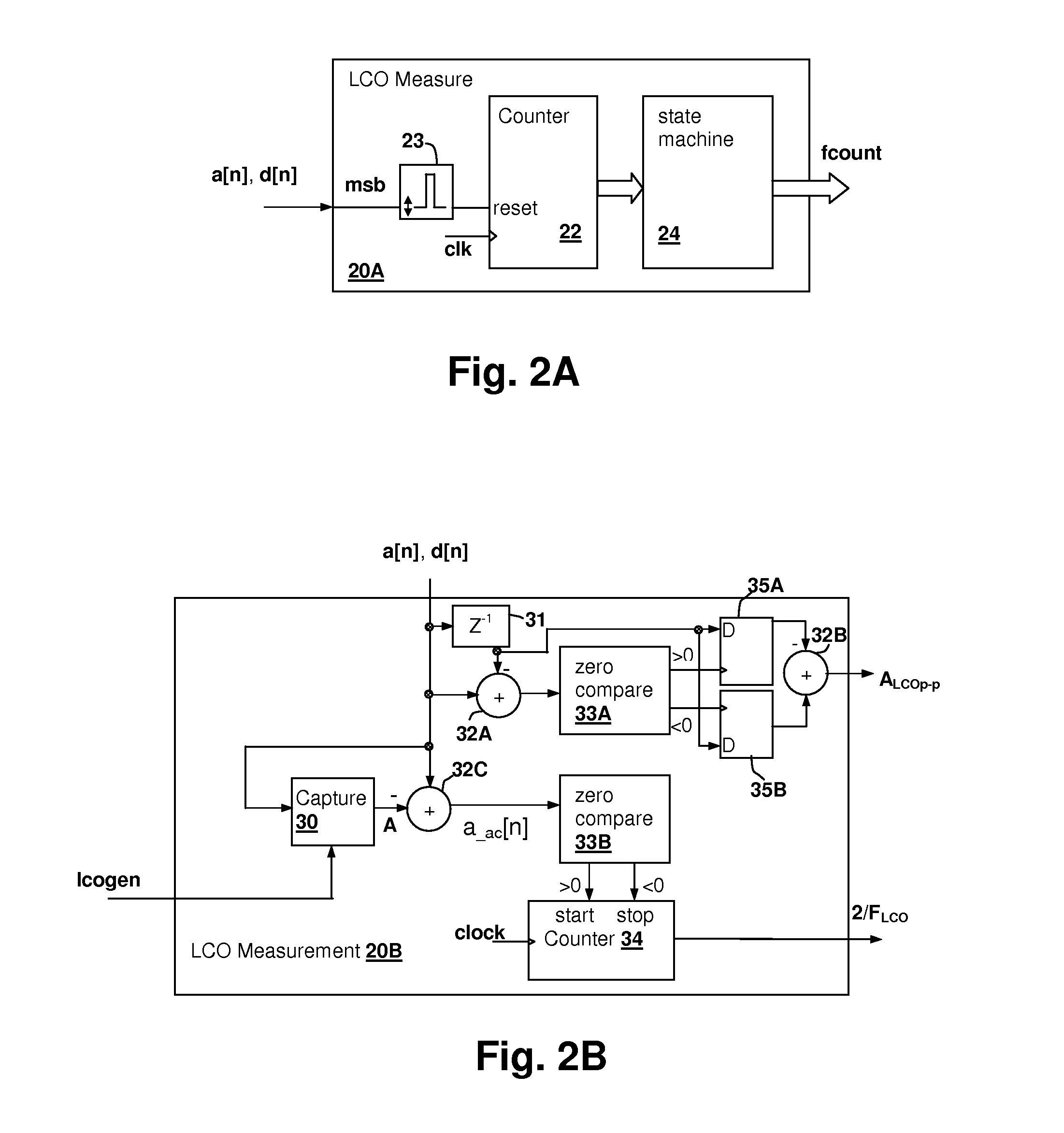Limit-cycle oscillation (LCO) generation by altering a digital transfer function of a feedback loop element
a digital transfer function and feedback loop technology, applied in the direction of electric variable regulation, process and machine control, instruments, etc., can solve the problems of high rejection rate, high cost, and capacitors being typically the most expensive components,
- Summary
- Abstract
- Description
- Claims
- Application Information
AI Technical Summary
Benefits of technology
Problems solved by technology
Method used
Image
Examples
Embodiment Construction
[0023]The present invention encompasses switch-mode power supplies (SMPSs) / switching power converters and methods of operation of SMPSs that generate limit-cycle oscillations (LCOs) in the converter loop in order to measure characteristics of the LCOs, which, in turn, are used to determine characteristics of the SMPS, e.g., the loop response, loop stability and / or parameters of components within the SMPS. The above-incorporated parent and other U.S. Patent Applications disclose LCO generation and response / parameter measurement, including generation of LCOs by reduction in the resolution of a pulse-width modulator (PWM). The present invention extends the possibilities for controlled LCO causation to any digital portion of the feedback loop that controls the switching circuit of the SMPS, and includes a variety of means for changing the response or transfer function of one or more of the feedback elements having a digital signal flow to temporarily alter the loop response.
[0024]In gen...
PUM
 Login to View More
Login to View More Abstract
Description
Claims
Application Information
 Login to View More
Login to View More - R&D
- Intellectual Property
- Life Sciences
- Materials
- Tech Scout
- Unparalleled Data Quality
- Higher Quality Content
- 60% Fewer Hallucinations
Browse by: Latest US Patents, China's latest patents, Technical Efficacy Thesaurus, Application Domain, Technology Topic, Popular Technical Reports.
© 2025 PatSnap. All rights reserved.Legal|Privacy policy|Modern Slavery Act Transparency Statement|Sitemap|About US| Contact US: help@patsnap.com



